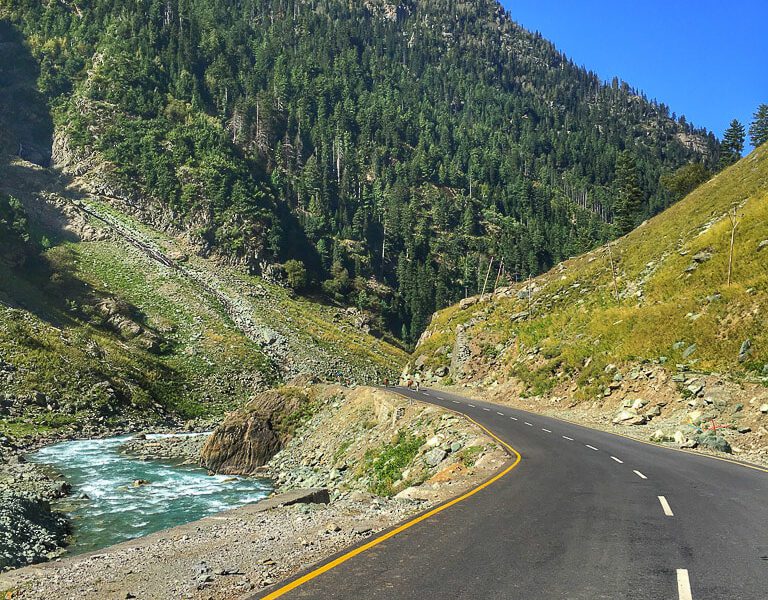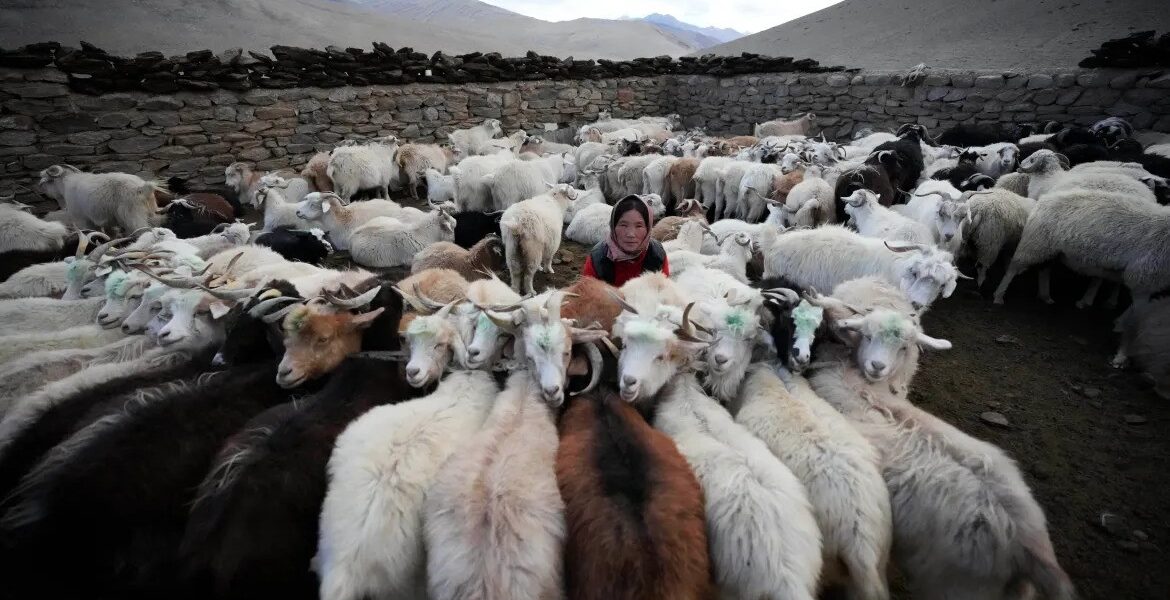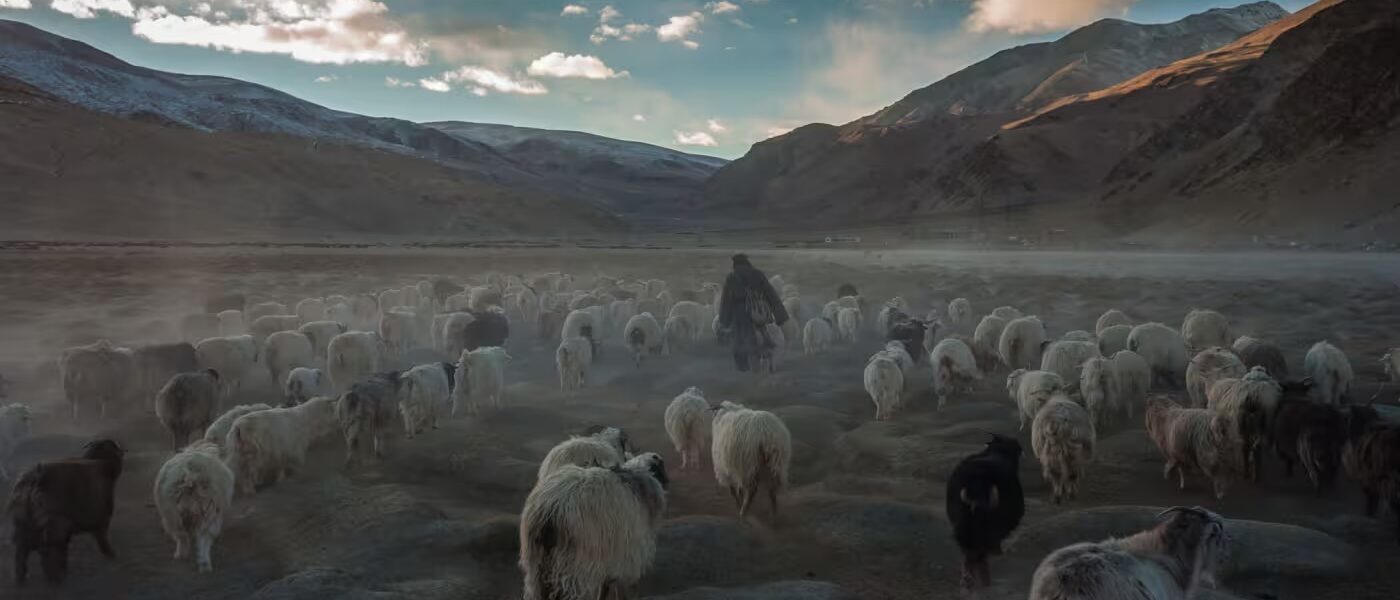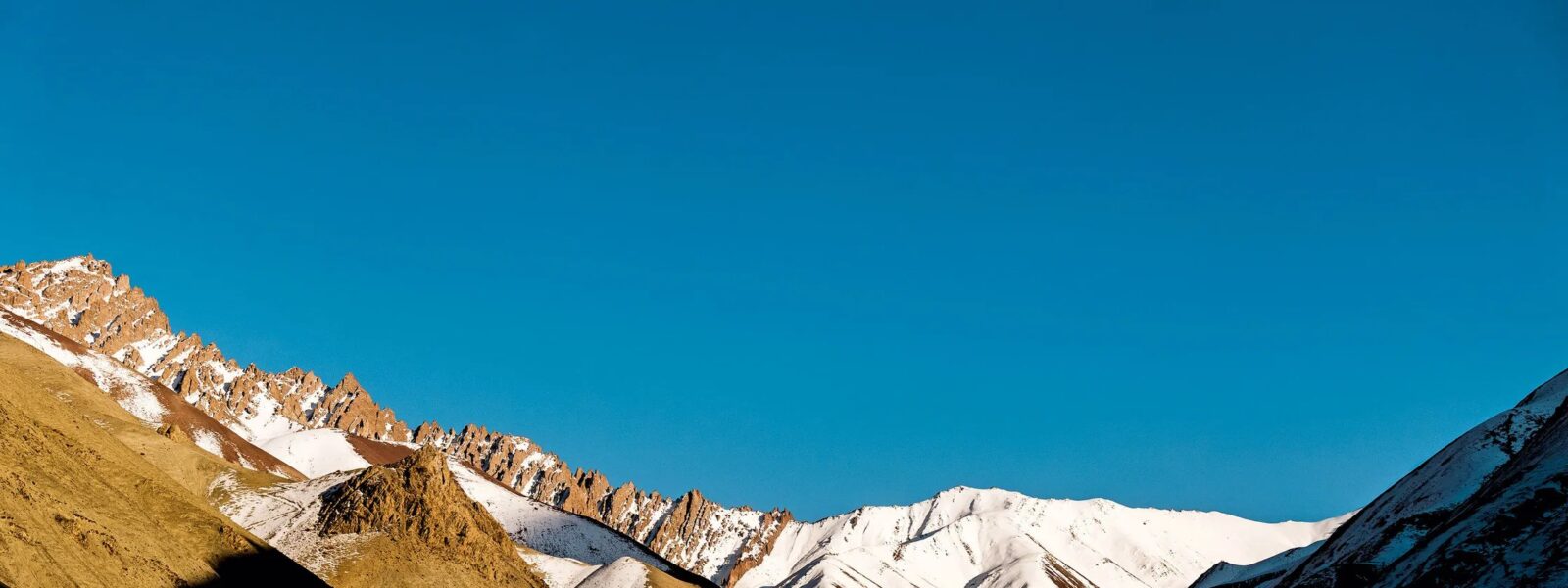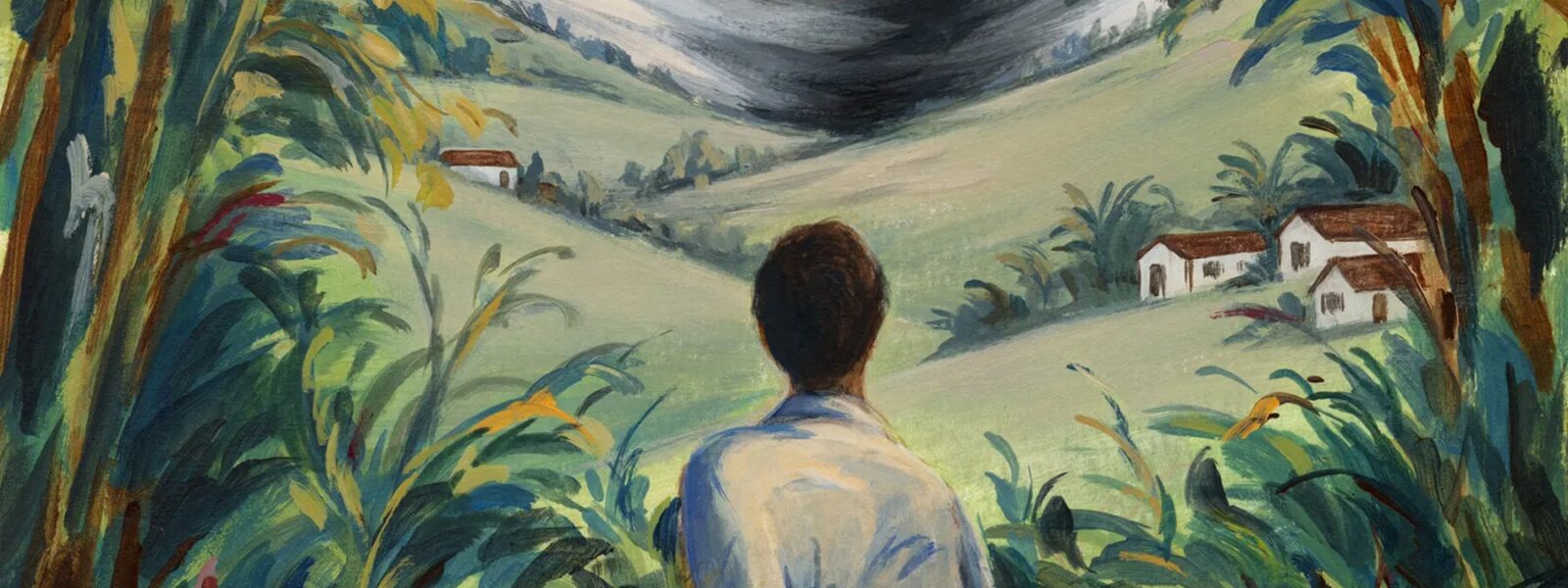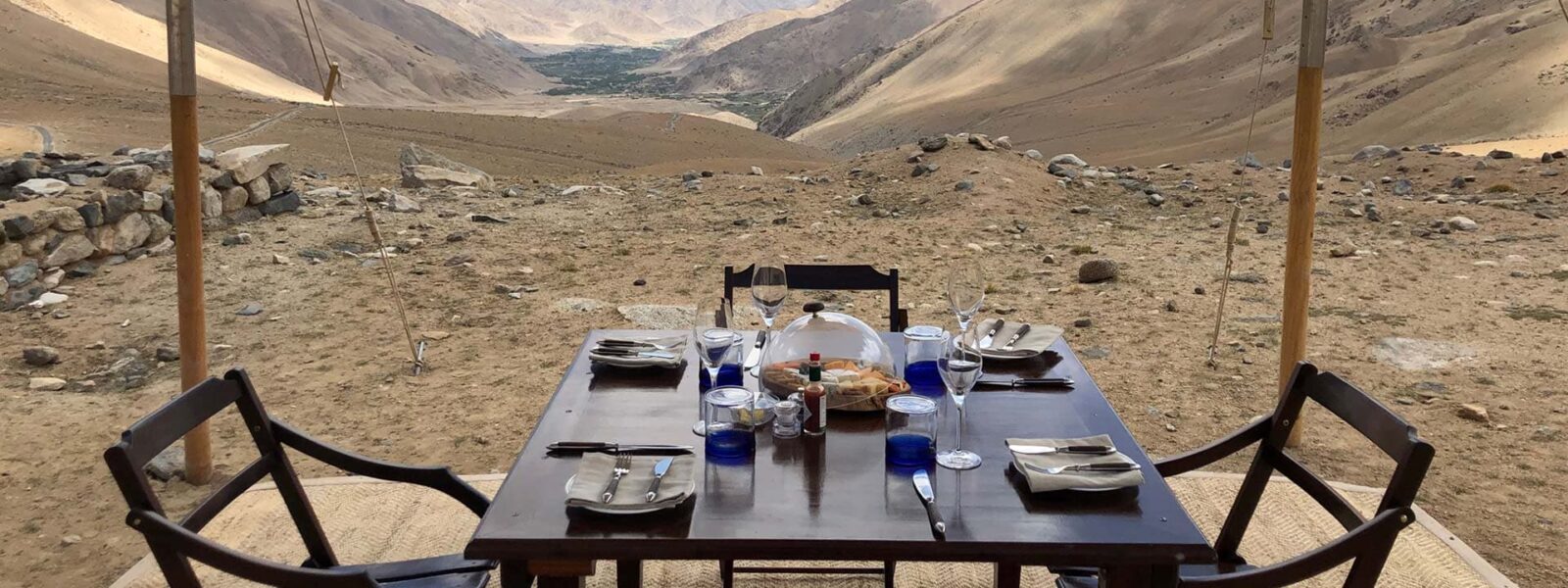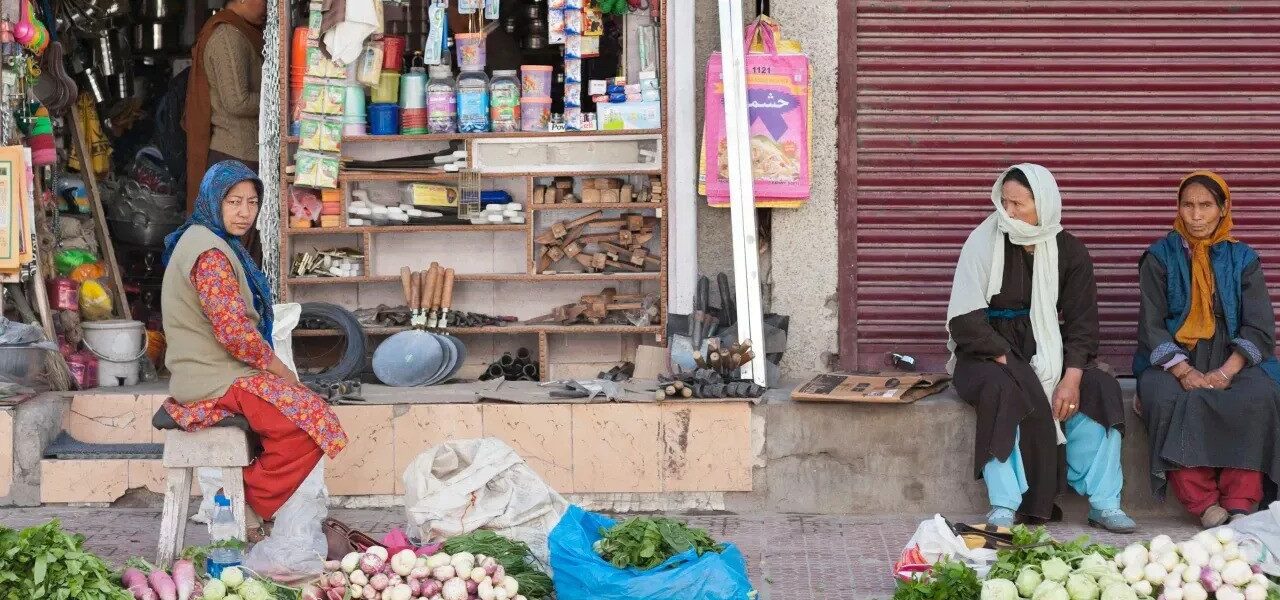Srinagar to Leh via Kargil – A Mesmerizing Road Journey through Ladakh
The road from Srinagar to Leh via Kargil is more than just a means of reaching a destination—it’s a transformative journey across some of the most captivating terrain on Earth. Winding through Kashmir’s lush valleys, over icy Himalayan passes, and into Ladakh’s stark and soulful high-altitude deserts, this route is often considered one of the most scenic road trips in India.
Unlike the more rugged Manali route, the Srinagar-Leh highway offers a gentler ascent, making it ideal for first-time travelers heading to Ladakh. The gradual elevation gain helps the body acclimatize naturally, reducing the risk of altitude sickness. Starting from the garden-filled slopes of Srinagar, the road passes through the flower-laden meadows of Sonamarg, ascends the dramatic Zoji La Pass (3,528m), and drops into the otherworldly landscapes of Drass and Kargil.
Kargil serves as the geographical and emotional midpoint. A small town with a complex history, Kargil has transformed from a conflict zone to a gateway of peace and resilience. The Kargil War Memorial stands as a silent tribute to bravery, surrounded by towering peaks and fluttering prayer flags.
From Kargil, the road climbs again through the Namika La and Fotu La mountain passes—often dusted with snow even in the warmer months—and begins its descent toward the Buddhist heartland of Ladakh. The landscape opens up to lunar plains near Lamayuru Monastery, where wind-sculpted cliffs and ochre mountains stretch across the horizon. It’s here, amid rock and silence, that travelers often realize they’ve entered a different world altogether.
With each kilometer, the changing topography reveals a new chapter of the journey. In just over 400 kilometers, you pass through green valleys, rugged battlegrounds, wind-swept plateaus, and timeless villages. Every bend in the road brings a new perspective—on nature, culture, and sometimes even oneself.
Whether you’re drawn to the route for its legendary high-altitude passes, its mix of Islamic and Buddhist cultural influences, or the sheer thrill of traversing the Himalayas, one thing is certain: this is a journey that leaves an imprint. One that begins in the beauty of Kashmir and ends in the soul-stirring silence of Ladakh’s mountains.
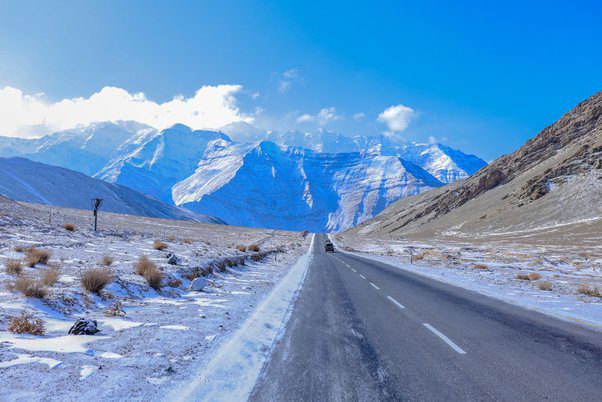
Why Take the Srinagar to Leh Route via Kargil?
When planning a road trip to Ladakh, two routes dominate the traveler’s imagination: one from Manali, and the other from Srinagar. While both are spectacular, the Srinagar to Leh route via Kargil holds a unique charm that blends gradual acclimatization, rich cultural encounters, and awe-inspiring landscapes into a singular, unforgettable journey.
One of the most practical and health-conscious reasons to choose this route is the gradual altitude gain. Unlike the sharp ascents of the Manali-Leh highway, the Srinagar route allows your body time to adjust naturally to the thinning air. Beginning at an altitude of around 1,600 meters in Srinagar and climbing steadily to 3,500 meters in Leh, this slow progression significantly reduces the risk of acute mountain sickness (AMS), making it ideal for first-time high-altitude travelers and families.
But the appeal isn’t only medical—it’s deeply cultural. This road is a living corridor of civilizations. From the Sufi shrines and Mughal gardens of Srinagar to the austere monasteries of Lamayuru and Alchi, each stop introduces you to a new facet of Himalayan life. In between lies Kargil, once known only for conflict, now blooming as a symbol of harmony. The region’s multi-ethnic identity—a vibrant mix of Shia Muslims, Sunni Muslims, and Tibetan Buddhists—makes it one of the most fascinating cultural landscapes in India.
For those drawn by the raw beauty of the mountains, this route does not disappoint. The crossing of Zoji La Pass is nothing short of dramatic—sheer cliffs, mist rising from deep valleys, and occasional flurries of snow even in summer. After that, the views expand into the windswept Drass Valley, often called the second coldest inhabited place on Earth. Then comes the high-altitude moonscape of Lamayuru, a geological wonder that feels more like the surface of Mars than the Indian Himalayas.
Add to this the relative smoothness of the highway—now mostly paved and well-maintained thanks to the efforts of the Border Roads Organization—and you have a journey that combines comfort with adventure. While the road from Manali often faces blockages and river crossings during early summer, the Srinagar-Leh highway typically opens earlier and remains more stable through the season.
Ultimately, the Srinagar to Leh route is not just about reaching Ladakh. It’s about easing into it—one village, one mountain pass, and one spiritual encounter at a time. It’s about savoring the transformation of landscapes and minds. For travelers seeking not only stunning views but meaningful experiences, this road is the perfect prelude to the magic of Ladakh.
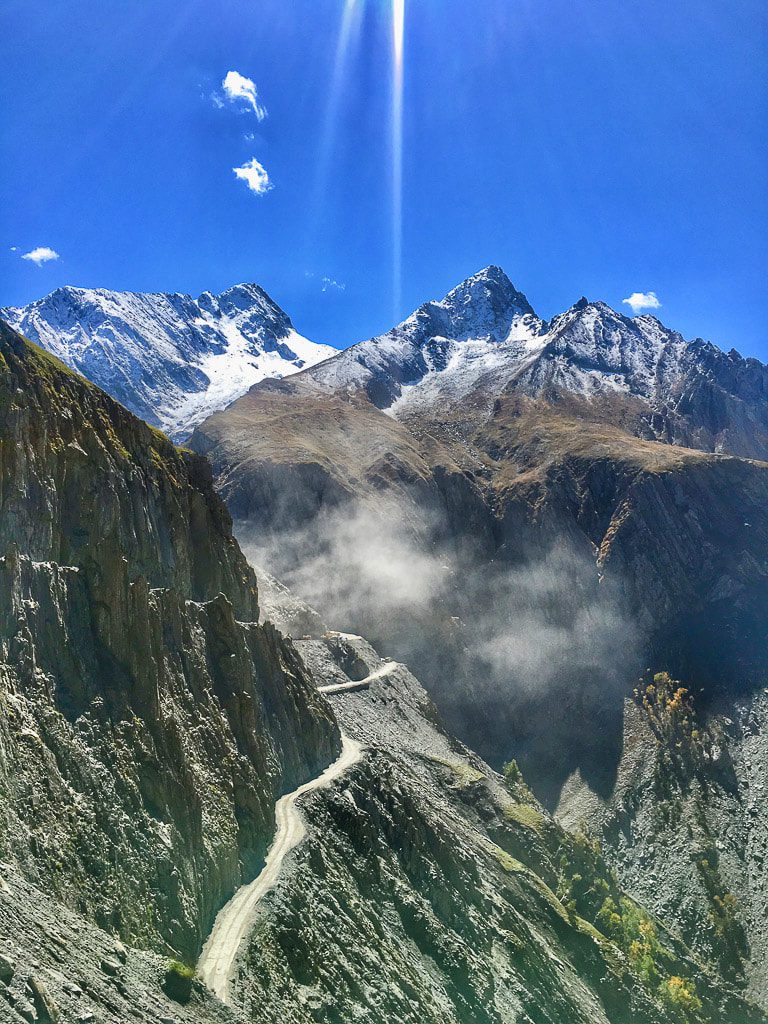
Detailed Route Map – From Srinagar to Leh via Kargil
Embarking on the road journey from Srinagar to Leh via Kargil is not just about travel—it’s a narrative written in winding highways, towering passes, ancient settlements, and deep valleys. This iconic 434-kilometer journey can be comfortably completed over two days, though many choose to stretch it further to savor the landscapes and stop at remarkable sites along the way.
The road begins in the bustling beauty of Srinagar, where houseboats glide on Dal Lake and the fragrance of Kashmiri spices wafts through Mughal gardens. The first major stop is Sonamarg (2,800m), just 80 kilometers from Srinagar, a meadow town tucked beneath glaciers and alpine peaks. From here, the climb begins toward the treacherous yet thrilling Zoji La Pass (3,528m), often regarded as the first true gateway to Ladakh.
Beyond Zoji La lies Drass, the cold desert valley etched into military history, with the Kargil War Memorial serving as a humbling reminder of human resilience. The air here is crisp, and the silence, profound. Another 60 kilometers takes you to Kargil town, the ideal overnight stop. Here, the mix of Baltistani culture, bustling bazaars, and peaceful riverside views offers a pause that is both scenic and soulful.
The second leg of the journey begins as you ascend toward Namika La Pass (3,700m), flanked by bare mountains that echo like an amphitheater. A short drive later, the surreal Fotu La Pass (4,108m)—the highest point on the Srinagar-Leh highway—opens to sweeping vistas of lunar landscapes and distant gompas.
From Fotu La, the road zigzags downward into Lamayuru, a mystical village cradled by moon-like terrain and home to one of Ladakh’s oldest monasteries. This is the point where you begin to feel the presence of Ladakh’s Buddhist soul: white stupas, prayer flags, and mud-brick homes dotting the hillsides.
Continuing eastward, you pass through Alchi and Basgo, both known for their ancient temples and wall frescoes, before the road widens and smoothens into the Indus Valley plains. The final stretch into Leh offers stunning views of the Zanskar Range and hints of the adventure that awaits—whether it’s trekking, cultural immersion, or high-altitude exploration.
Here’s a simplified route overview:
- Srinagar → Sonamarg → Zoji La Pass → Drass → Kargil (204 km)
- Kargil → Mulbekh → Namika La → Fotu La → Lamayuru → Alchi → Leh (230 km)
Each segment of the Srinagar-Leh route unveils a different landscape and atmosphere—from forested valleys to high mountain passes to desert plains. Travelers are advised to keep their cameras charged, hearts open, and itineraries flexible. Because no matter how many kilometers the road counts, it’s the moments and places in between that make this journey eternal.
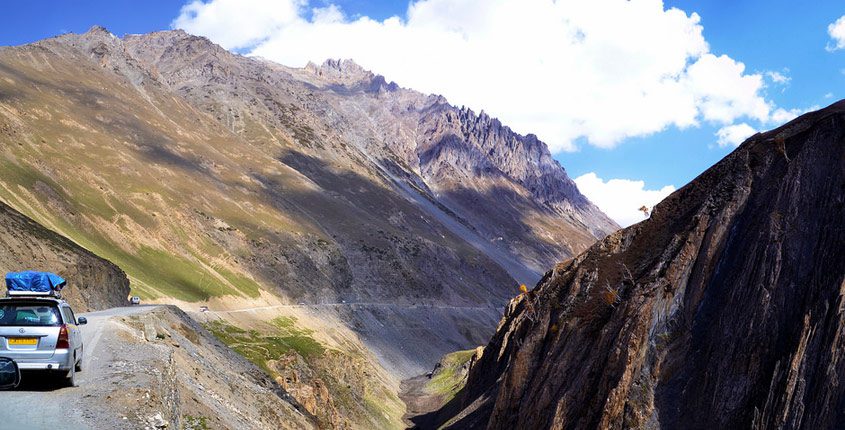
Best Time to Travel from Srinagar to Leh
Timing is everything when it comes to the Srinagar to Leh road trip. This is not an all-season highway—it is a living, breathing mountain road that opens and closes with the moods of nature. Understanding the best time to travel from Srinagar to Leh is essential for a smooth, safe, and unforgettable journey.
The Srinagar-Leh highway typically opens to vehicular traffic by early to mid-May, depending on the snowfall during the preceding winter. The Border Roads Organisation (BRO) works tirelessly to clear the snow from the high mountain passes like Zoji La. The highway generally remains open until late October or early November, after which snowfall makes it impassable.
The most popular and safest months to undertake the journey are between June and September. During this window, the road conditions are most favorable, the weather is relatively stable, and accommodations and roadside services are fully operational. June and July offer lush views of Kashmir’s valleys, while August and September bring golden hues to the Ladakhi landscape.
May is often a transitional month—ideal for adventure seekers and off-season travelers willing to navigate the occasional snow patch or limited facilities. However, travelers must confirm road status before planning a May trip. Conversely, October is a quiet time on the road with fewer travelers, colder temperatures, and a spiritual stillness in the air—but also the risk of early snowfall at Zoji La or Fotu La.
Monsoon season (late July to early August) affects the Kashmir Valley, bringing occasional landslides and roadblocks between Srinagar and Sonamarg. While Ladakh remains largely dry due to its rain-shadow geography, travelers should keep buffer days in their itinerary and monitor weather updates from reliable sources.
Temperature variations are also critical to note. In peak summer, daytime temperatures in the Kashmir Valley range from 15°C to 30°C, while Ladakh remains cooler at 10°C to 25°C. Nights, especially in Drass, Kargil, and Lamayuru, can drop to single digits even in July. Dressing in layers is crucial, and travelers should always carry windproof jackets, gloves, and a warm hat.
In summary, the sweet spot for a road trip from Srinagar to Leh is between June and mid-September. This period combines reliable road conditions, beautiful weather, open passes, and access to cultural festivals. Whether you’re chasing dramatic cloudscapes, photographing wild Himalayan blooms, or just soaking in the silence of the mountains, traveling during these months ensures the experience of a lifetime.
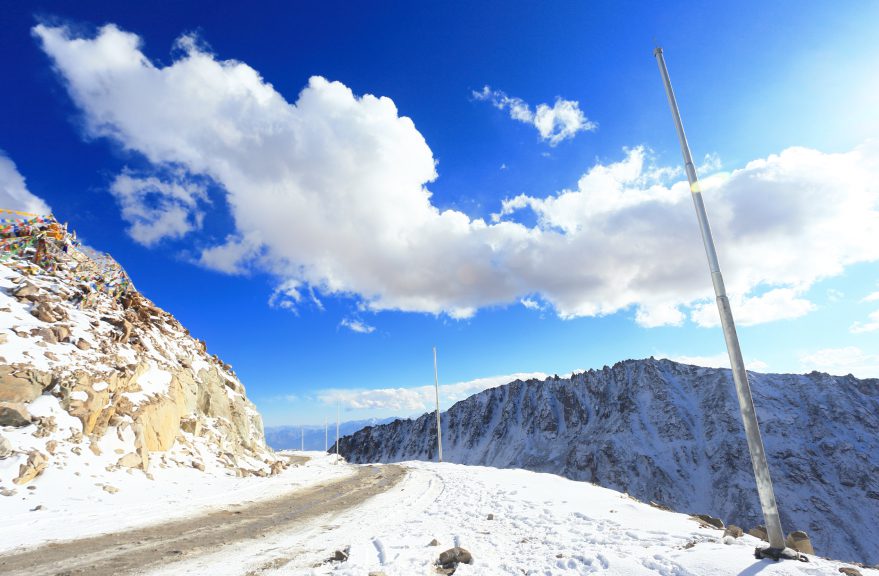
Travel Essentials for Srinagar to Leh Road Trip
The beauty of the Srinagar to Leh via Kargil route lies in its remoteness—but with that comes the need for thoughtful preparation. Whether you’re on a motorbike, in an SUV, or in a taxi, packing the right essentials can make the difference between a smooth journey and one riddled with challenges. This high-altitude road trip is not just about scenic passes; it’s also about self-sufficiency, safety, and respect for the environment and culture.
1. Packing the Right Gear
Temperatures can vary wildly—from warm afternoons in Srinagar to sub-zero nights in Drass and Lamayuru. Dress in layers: base thermals, fleece or down jackets, and windproof outer layers. Bring warm gloves, a woolen cap, and sunglasses with UV protection to combat the intense high-altitude sun. A small first-aid kit with personal medicines, Diamox (for altitude sickness), and ORS sachets is a must. Other useful items include a flashlight or headlamp, power banks, and extra batteries, as electricity can be intermittent in remote areas.
2. Fuel Up Wisely
Fuel stations are not as frequent as in urban areas. After Srinagar, the main petrol pump is in Kargil. Make sure to start with a full tank in Srinagar, and refuel in Kargil even if you’re only halfway down. If you’re riding a motorcycle or driving a vehicle with a smaller tank, carry extra fuel in certified jerry cans—especially if you’re taking detours to remote areas like Zanskar or Batalik.
3. Mobile Network and Internet Connectivity
Only postpaid SIM cards from Indian telecom providers like BSNL, Jio, and Airtel work in Ladakh. Prepaid SIMs from other states do not function due to government regulations. Coverage is relatively good in Srinagar and Kargil, but patchy to nonexistent in areas like Drass, Mulbekh, and Lamayuru. Download offline maps and keep all important documents saved locally on your device.
4. Permits and Identification
For the main Srinagar to Leh route, Inner Line Permits are not required. However, if you plan to explore areas like Batalik or Dah Hanu villages along the Indus, permits may be needed. Always carry your original government-issued ID (passport, Aadhaar card, etc.) and at least 4–5 photocopies for hotel check-ins and checkpoints.
5. Food, Water, and Emergency Rations
Carry ample drinking water and a refillable bottle to avoid plastic waste. Rehydration is essential at high altitudes. Pack high-energy snacks like nuts, dry fruits, energy bars, and chocolate. While roadside dhabas are available in Sonamarg, Drass, and Kargil, you might go for long stretches without food stalls—especially if leaving early in the morning or traveling late.
6. Cash and Payments
ATMs can be found in Srinagar and Kargil, but card payment systems are unreliable in remote towns. Carry enough cash (in small denominations) for food, fuel, and accommodation. It’s also courteous to tip drivers and homestay hosts in cash.
This route is no ordinary drive—it’s an expedition into the heart of the Himalayas. Preparing wisely ensures that you don’t just arrive in Ladakh—you thrive there. Traveling light yet smart, with a sense of responsibility, allows you to embrace the beauty of this journey without unexpected setbacks.

Accommodation Options on the Srinagar-Leh Highway
A journey from Srinagar to Leh via Kargil is best enjoyed at a slow pace, and that means planning where you’ll stop for the night. While the full journey can technically be done in 14 to 16 hours of non-stop driving, travelers seeking an immersive and safe experience should split it over two or more days. The highway offers a range of accommodation options—from charming village homestays to practical guesthouses and mid-range hotels. Knowing where to rest along the way is crucial for both comfort and altitude adaptation.
Kargil is the most common overnight stop and is perfectly placed at the halfway mark. This bustling town sits along the Suru River and offers a wide selection of places to stay. Options range from government-run tourist bungalows to budget guesthouses, and even newer boutique-style hotels with modern amenities. Some of the best-reviewed accommodations in Kargil include Hotel Greenland, The Kargil, and Hotel Jan Palace. Most offer hot showers, Wi-Fi, and traditional Ladakhi meals. Booking ahead is recommended, especially during the peak season (June to September).
If you’re seeking a quieter or more cultural experience, consider stopping in Drass, known for its mountain views and proximity to the Kargil War Memorial. Though accommodation here is more basic, it’s a great option for those who want to soak in the raw beauty of the mountains and the stark stillness of the high-altitude plateau. Family-run lodges and small guesthouses offer warm hospitality, simple food, and priceless views of snow-draped peaks.
Further along, Mulbekh and Lamayuru offer unique stay experiences for those who want to extend the journey into a 3-day affair. Lamayuru, especially, is a magical place to spend a night—home to the ancient Lamayuru Monastery and the dramatic moonscape terrain. Staying here provides not just rest but spiritual tranquility and a deep dive into the Buddhist culture of Ladakh. Some monasteries in this area even offer basic rooms to travelers seeking a meditative retreat.
As you approach Leh, there are also stays available in Alchi and Saspol, which are ideal for travelers interested in exploring the lesser-visited monasteries and villages before entering the capital. These villages provide a slow introduction to Ladakhi life with their apricot orchards, mud-brick homes, and quiet rhythms of daily life.
Across all stops, homestays offer the most authentic experience. Not only are they budget-friendly, but they also allow travelers to connect with local families, enjoy home-cooked meals, and gain a deeper appreciation for Ladakhi and Balti traditions. Most homestays are equipped with basic bedding, running water, and solar-powered lighting.
No matter your style—comfort-seeking or culturally curious—the Srinagar-Leh highway offers accommodation options that elevate the road trip into a complete Himalayan experience. Just be sure to book ahead during festivals, holidays, and peak travel months, as rooms in small towns fill up quickly.
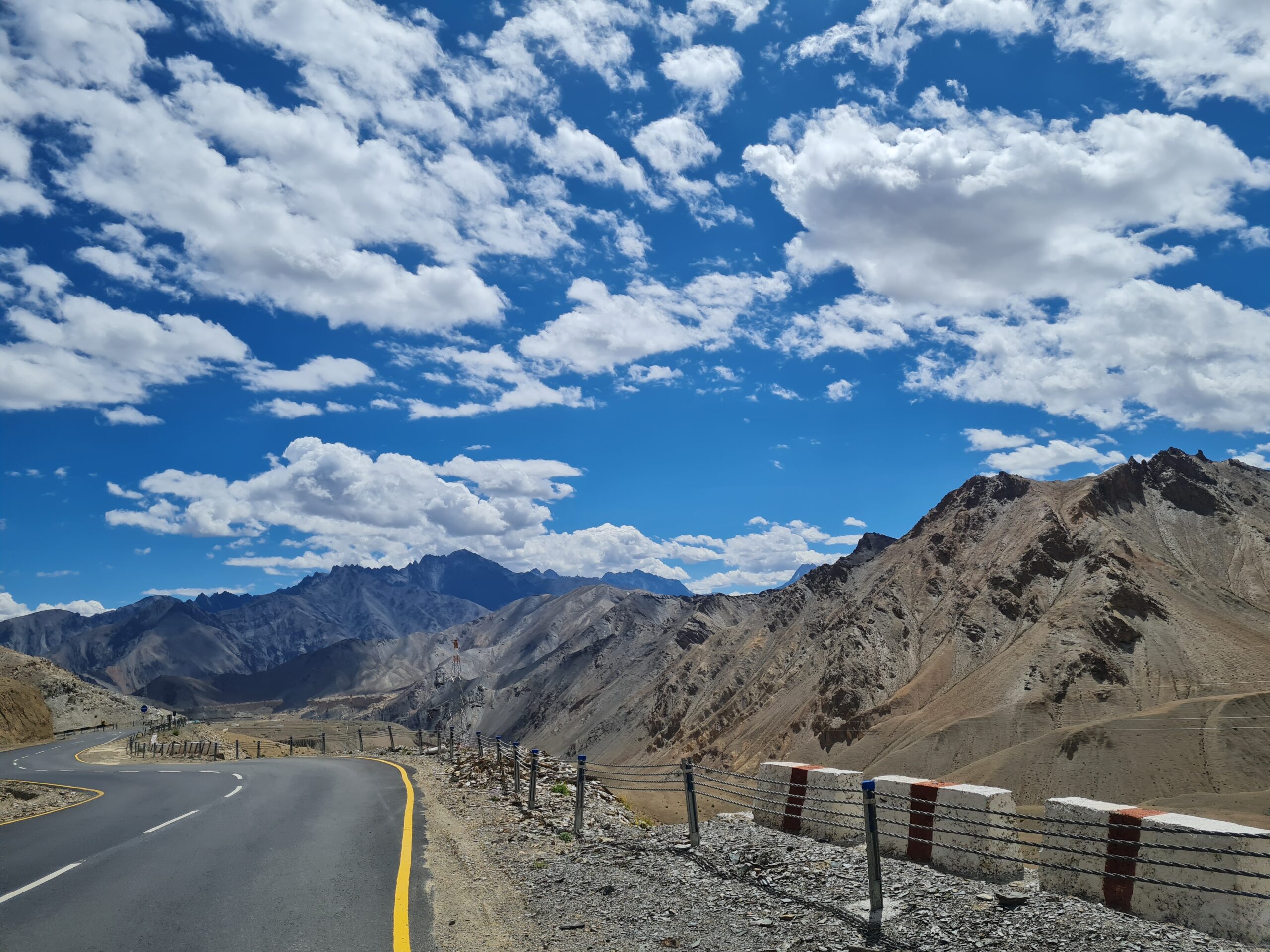
Food Stops and Local Delicacies on the Route
A journey through the Himalayas is not just a feast for the eyes—it’s a treat for the taste buds too. The Srinagar to Leh via Kargil route winds through a corridor of diverse cultures, each with its own flavors and food traditions. From hearty roadside dhabas serving soul-warming meals to quiet family-run kitchens offering age-old recipes, every bite on this journey tells a story.
Your culinary adventure begins in Srinagar, where the famous Wazwan cuisine offers an array of richly spiced dishes. If you haven’t yet tried it, a plate of Rogan Josh, Gushtaba, or Yakhni with fragrant Kashmiri rice is a must before hitting the road. Early risers leaving Srinagar will find tea stalls and small eateries in Sonamarg, ideal for a quick breakfast with options like aloo paratha, chai, and boiled eggs.
Once you ascend Zoji La Pass and descend into Drass, the food changes character. Here, traditional Balti dishes such as Qahwa (green tea with spices and almonds) and Thukpa (Tibetan noodle soup) become more common. The simplicity of ingredients—barley, root vegetables, dried meat—reflects the region’s harsh climate, and yet every dish is deeply nourishing. In Drass, modest tea stalls serve butter tea and Maggi, a favorite among trekkers and bikers for its warmth and quick preparation.
Kargil, the midpoint of your journey, offers a surprising variety of food options. As a larger town, it boasts bakeries, kebab stalls, and restaurants serving both Indian and Tibetan dishes. Don’t miss out on Skieu and Chutagi, Ladakhi-style handmade pasta dishes usually cooked with local vegetables. In the market area, you’ll also find local breads, dried apricots, and Ladakhi butter to sample or buy as edible souvenirs.
For travelers with a slower pace, stopping in Mulbekh or Lamayuru offers another layer of flavor. In Lamayuru, meals are often served by families running homestays, where everything from momos to barley soup is made fresh from scratch. These simple dishes, served in wooden bowls with a view of wind-carved cliffs and ancient monasteries, leave a lasting impression.
Food options get sparse between Lamayuru and Leh, so it’s advisable to stock up on snacks in Kargil or Alchi. Pack dry fruits, energy bars, chocolates, and water for this stretch. Some guesthouses may provide packed lunches if requested in advance.
While the road may not be lined with gourmet cafes, its culinary offerings are authentic, sustaining, and deeply rooted in place. Every stop is an opportunity to connect—with locals, with landscapes, and with stories served on a plate. Eating along the Srinagar-Leh highway is less about fine dining and more about shared warmth, survival, and the joys of simple, slow-cooked meals in the mountains.
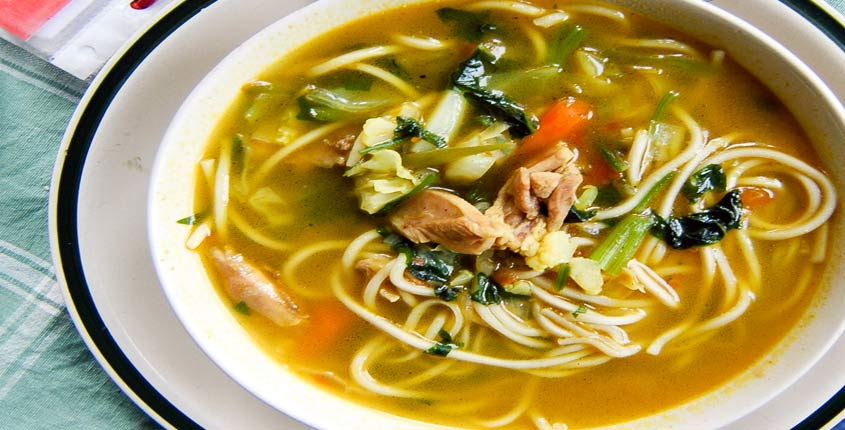
Travel Permits, Safety Tips, and Local Regulations
While the Srinagar to Leh via Kargil route may seem like a simple road trip across northern India, it actually involves crossing through some of the most strategically sensitive areas in the country. Being prepared with the right documentation and an understanding of local regulations ensures your journey is safe, smooth, and respectful of the region’s cultural and political sensitivities.
1. Travel Permits and Documentation
For Indian citizens, the good news is that no permit is required to travel on the main Srinagar–Kargil–Leh highway. However, if you plan to explore beyond the highway—such as the Batalik sector, Dah Hanu villages, or other border-adjacent areas—you will need an Inner Line Permit (ILP). This can be obtained in Leh from the DC office or online through the Ladakh administration portal. Foreign nationals, however, must carry a Protected Area Permit (PAP) for such regions, and their travel is restricted to certain notified circuits with registered guides or tour operators.
Regardless of nationality, travelers should always carry multiple photocopies of valid government ID—such as an Aadhaar card, passport, or voter ID—as they are often required at hotel check-ins and army checkpoints, particularly in Drass, Kargil, and Khalatse.
2. Safety Tips on the Srinagar-Leh Highway
The route is generally safe, but it passes through areas that are prone to landslides, fog, and snow—especially near Zoji La and Fotu La. Always check the daily road status before departure. Avoid driving at night, as lighting is poor and altitude fatigue can set in. For bikers, protective gear, waterproof layers, and puncture kits are essential. Car travelers should ensure their vehicles are serviced, brakes are in top condition, and they carry a spare tire and basic tools.
Mobile connectivity is intermittent, so don’t rely solely on navigation apps. Download offline maps, carry a printed itinerary, and share your travel plan with someone back home. BSNL, Airtel, and Jio (postpaid only) offer the most reliable coverage along the way. In an emergency, the Indian Army and BRO (Border Roads Organisation) outposts often provide assistance, and locals are generally helpful and welcoming.
3. Respecting Local Culture and Border Sensitivities
The route passes through areas with mixed religious and ethnic populations—Kashmiri Muslims, Balti communities, and Ladakhi Buddhists. Dressing modestly, asking before taking photographs, and being polite at religious and military sites goes a long way. Photography is strictly prohibited near army camps and bridges. Always follow signage and respect restricted zones near the Line of Control (LoC).
Alcohol consumption in public, littering, and drone flying without permission are considered serious offenses. In many towns, especially in Kargil and Drass, local customs are deeply rooted in tradition, and travelers are expected to behave accordingly.
A road trip to Ladakh is an extraordinary privilege. With a little preparedness and respect for the land and its people, your journey from Srinagar to Leh can be not just scenic, but also safe, meaningful, and memorable in the truest sense.
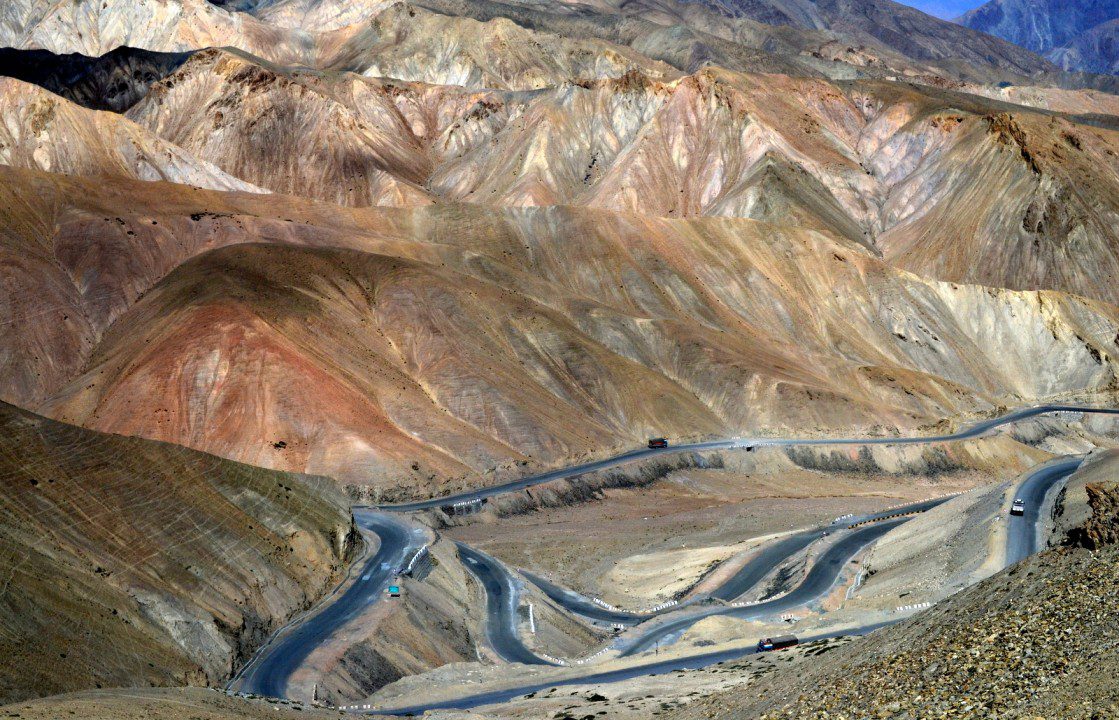
Must-Visit Attractions Along the Srinagar-Leh Route
The Srinagar to Leh road is not just a connection between two points on the map—it’s a continuous stream of stories, landscapes, and historic landmarks. As you journey through this dramatic corridor of the Himalayas, you’ll encounter a wealth of places that demand more than a glance. From ancient monasteries to war memorials and lunar landscapes, here are the must-visit attractions that will elevate your trip from a scenic drive to an unforgettable exploration.
1. Sonamarg – The Meadow of Gold
Just 80 kilometers from Srinagar, Sonamarg is the first major scenic stop. Framed by lush meadows, gushing rivers, and snow-capped peaks, it serves as the gateway to the Zoji La Pass. If you have time, take a short detour to Thajiwas Glacier or simply relax along the Sindh River banks.
2. Zoji La Pass – Gateway to Ladakh
Crossing the formidable Zoji La (3,528 meters) is an adventure in itself. Often flanked by snow on both sides, this narrow mountain pass offers jaw-dropping views of deep valleys and rugged cliffs. It’s also one of the highest points on the Srinagar-Leh highway and marks the dramatic shift in landscape and culture.
3. Drass War Memorial – A Silent Tribute
Located in the second coldest inhabited place on earth, the Kargil War Memorial is a place of solemn reflection. Set against the backdrop of the Tololing Range, the memorial honors the soldiers who lost their lives in the 1999 conflict. A museum and eternal flame tell the story with dignity and pride.
4. Kargil Town – The Heartbeat of the Route
Midway through the journey, Kargil is more than a pit stop. This town pulses with a quiet resilience and offers bazaars, local food, and access to nearby cultural spots like Hundurman Village—an abandoned Balti settlement perched on the LoC, now open to tourists as a heritage site.
5. Mulbekh Monastery and Maitreya Buddha
Just before you reach Namika La, a giant 9-meter-tall rock-carved statue of the Maitreya Buddha greets travelers. The nearby Gompa, set atop a craggy hill, offers a panoramic view of the rugged Suru Valley and is a tranquil spot for those seeking spiritual pause.
6. Lamayuru – Land of the Moon
The landscape around Lamayuru looks like it belongs to another planet. Known as the Moonland of Ladakh, this ancient village houses one of Ladakh’s oldest monasteries. Lamayuru Monastery, perched above the eroded hills, hosts colorful religious festivals and offers striking views of the barren Himalayas.
7. Magnetic Hill – Defying Gravity
Near Leh, you’ll come across the famed Magnetic Hill, a place where vehicles appear to roll uphill against gravity. Whether it’s a quirky natural phenomenon or an optical illusion, it’s fun to stop and experience the mystery firsthand.
8. Indus-Zanskar Confluence
Before entering Leh, take time to stop at the Sangam viewpoint, where the emerald waters of the Indus River merge with the mud-brown flow of the Zanskar. It’s a photographer’s delight and one of the most iconic natural scenes in Ladakh.
Each of these stops is more than a detour—they are landmarks that bring the journey alive. Whether spiritual, historical, or natural, these attractions along the Srinagar-Leh route serve as reminders that in Ladakh, the road itself is the destination.
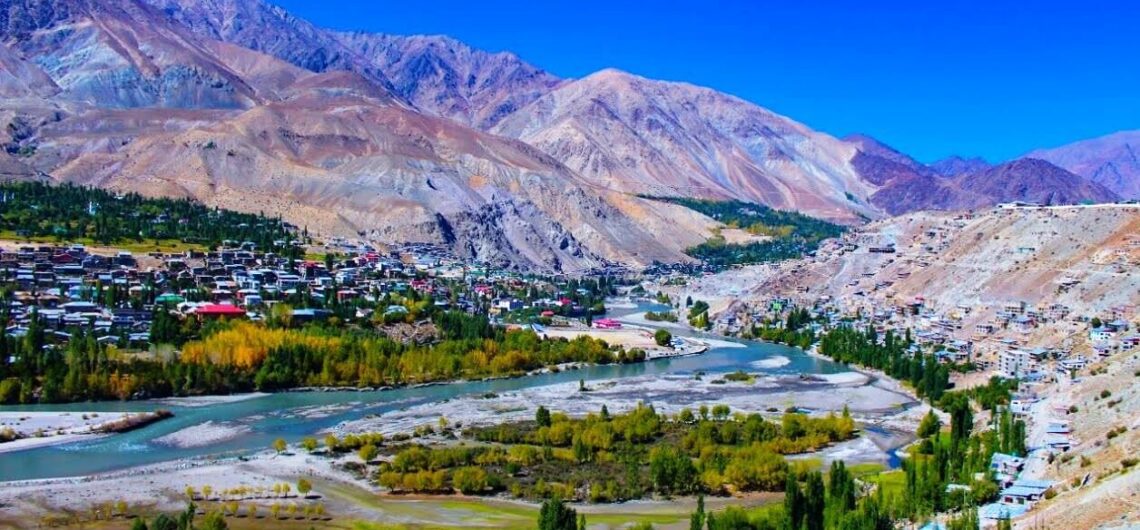
FAQs – Planning Your Srinagar to Leh Road Trip
Planning a journey from Srinagar to Leh via Kargil often brings up several questions—from safety concerns to the best travel seasons, and what to expect along the way. Below are some frequently asked questions that will help you prepare better and ensure a smoother, safer, and more enjoyable Himalayan road trip.
How many days should I plan for the Srinagar-Leh road trip?
The ideal duration is 2 to 3 days if you’re traveling by car or bike and want to enjoy the major attractions along the route. Most travelers prefer an overnight halt at Kargil, and some extend the journey with extra stops at Lamayuru or Alchi. If you’re into photography or slow travel, consider making it a 4-day itinerary to explore deeply.
Is it safe to travel from Srinagar to Leh by road?
Yes, the route is generally safe and well-patrolled by the Indian Army and local authorities. However, travelers are advised to avoid night driving, check weather and road conditions regularly, and maintain a flexible itinerary during monsoon months (July–August). Always carry valid ID, extra cash, fuel, and offline maps.
Which is better: Srinagar-Leh route or Manali-Leh route?
If it’s your first trip to Ladakh, the Srinagar route is often recommended due to its gradual altitude gain, which reduces the risk of AMS. It’s also open earlier in the season and offers rich cultural experiences, better road stability, and lush scenery through Kashmir, Drass, and Kargil.
When does the Srinagar-Leh highway open and close?
The highway usually opens by mid-May and remains accessible until early November, depending on snowfall and weather conditions. The highest passes—Zoji La, Namika La, and Fotu La—dictate the opening and closing schedule. Always check the latest updates from the BRO (Border Roads Organisation) before planning.
Do I need any permits for this route?
No permits are required for the main Srinagar-Leh highway. However, if you plan to visit areas like Batalik, Dah Hanu, or cross into Nubra via alternate routes, Inner Line Permits (ILPs) may be needed. Foreigners also require Protected Area Permits for certain sectors.
Are fuel stations easily available along the way?
Fuel stations are limited. The most reliable ones are in Srinagar, Sonamarg, Kargil, and Leh. Carry extra fuel if you’re riding a motorcycle or planning side detours. Avoid depending on small roadside stalls unless it’s an emergency.
Will I get mobile network coverage during the journey?
Coverage is patchy beyond Sonamarg and Drass. Postpaid SIM cards from BSNL, Jio, and Airtel work best. Prepaid connections from outside Jammu & Kashmir will not function in Ladakh. Internet is unreliable in remote regions, so prepare accordingly.
What type of vehicle is best for this trip?
An SUV or any high-ground-clearance vehicle is ideal. For bikers, 350cc or above bikes like Royal Enfield or Himalayan are recommended. Ensure your vehicle is well-serviced, with a spare tire and puncture kit ready.
Can I do this road trip with kids or elderly family members?
Yes, but you must take extra care with altitude adaptation. Make frequent rest stops, keep everyone hydrated, and avoid overexertion. The Srinagar route is more suitable than the Manali route for families, as it offers a more gradual climb.
These FAQs cover most of the practical concerns you might have before hitting the road. The key is to stay informed, pack smart, and remain flexible. With the right mindset, the Srinagar to Leh journey will unfold as a seamless blend of adventure, discovery, and unforgettable scenery.
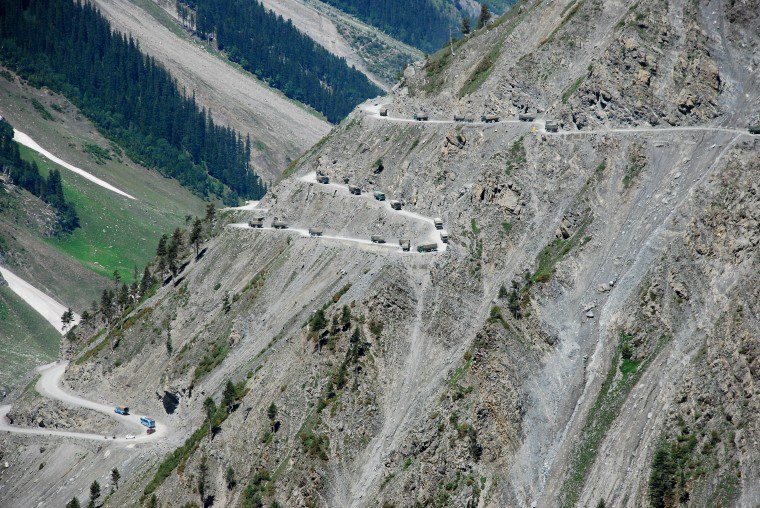
Final Thoughts – Is the Srinagar to Leh via Kargil Route Worth It?
Few roads in the world offer the kind of transformation that the Srinagar to Leh via Kargil highway delivers. Over the course of 434 kilometers, the journey threads together shifting climates, cultures, and topographies. One day you’re sipping saffron tea beside Dal Lake, the next you’re crossing icy mountain passes, and by the end, you’re standing under the open blue skies of Ladakh, where silence speaks louder than words.
What makes this route exceptional isn’t just the dramatic terrain or the postcard-perfect views—it’s the slow, rhythmic immersion into a world that feels untouched by time. Unlike air travel that drops you abruptly into high altitude, the road allows you to arrive gradually and absorb deeply. You see the shift in architecture, food, language, and landscape—each hour revealing a new layer of the Himalayan soul.
The route also invites introspection. The quiet of Drass, the resilience of Kargil, the surreal landscapes of Lamayuru—all leave their mark. You’ll remember not just the places but the people: the tea-seller at the mountain bend, the monk in a windswept monastery, the truck driver waving from across the pass. Every bend becomes a memory. Every valley, a chapter.
Yes, the road demands patience. It requires preparation, flexibility, and respect for its unpredictability. But in return, it offers something that few modern journeys do: a sense of passage—from one world into another, and perhaps from one version of yourself into another. This is not just a trip; it’s a rite of passage through the beating heart of the Indian Himalayas.
So is it worth it? Unequivocally, yes. If you’re willing to slow down, look closely, and travel not just through space but through story, then the Srinagar to Leh road trip will reward you in ways that last far beyond your return.

